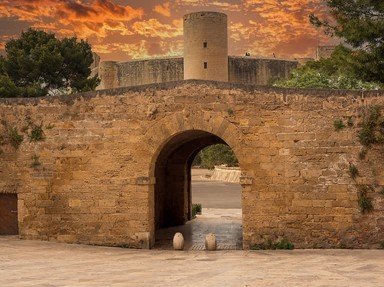Quiz Answer Key and Fun Facts
1. Probably the oldest, most famous and (largely) intact fixed defence line is the Great Wall of China. It stretched for over 13,000 miles.
2. "We're going to hang out the washing on the Siegfried Line" was a song popular with British soldiers during WW2. The Siegfried Line was built by Germany and ultimately proved impregnable.
3. In the 19th Century, what were to become an impregnable line of defences around a capital city were built. Which city was defended by what is now named the "Fort Circle"?
4. When the Romans arrived in what is now known as Britain, they had a little bit of trouble with the locals. Which lines of defence were built to mark the northernmost border of the Empire?
5. After being invaded by Germany across their border in WWI, France built a line of fortifications to prevent a similar incursion again. What was it called?
6. Stretching some 1,500 miles along its border, which nation built the Alpine Wall?
7. One of the most famous defence lines in Europe was Hadrian's Wall. The Romans used slave labour to build the fortifications.
8. Not all walls were designed to keep people out, some were designed to keep people in. Where in the 20th Century would you have found the "Antifascistischer Schutzwall"?
9. Not all walls were built of bricks and mortar. In India in the 19th Century a 2,500 mile (4,000 km) line of hedges was built. What was the purpose?
10. The longest defensive line in the world in modern times was not a wall, but a fence, and it was constructed to block the movements of animals rather than people. Which animals?
Source: Author
darksplash
This quiz was reviewed by FunTrivia editor
stedman before going online.
Any errors found in FunTrivia content are routinely corrected through our feedback system.
